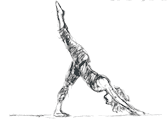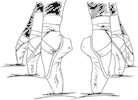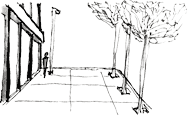
Shin Splint Prevention
Posted on 10 Jun, 2019

Any runner who has experienced the pain of shin splints knows the frustration of dealing with it. The pain might go away with rest, but as soon as you start running again, it returns to haunt you. Fortunately, shin splints is both curable and preventable. Read on to find out how you can keep shin splints away for good.
Add Strength Training To Your Workout.
 Our shins pick up the slack for body parts that are weak. So it really helps when you strengthen the areas that support your shins; your feet, ankles, calves, and hips.
Our shins pick up the slack for body parts that are weak. So it really helps when you strengthen the areas that support your shins; your feet, ankles, calves, and hips.
Here are some exercises that may help.
Toe Raises. In a standing position, slowly rise up on your toes, then slowly lower your heels to the floor.
Toe Curls. Stand with feet hip-width apart at the edge of a towel. With the toes of your left foot, gather the towel and slowly pull it toward you. Repeat.
Heel Drop. Stand on your toes on the edge of a step. Lower your heels and raise it back up.
Pre-exercise Warm Up
 Shin splints are often found in runners who have tight Achilles tendons or calf muscles. So stretching your calves and Achilles before you run is a good idea.
Shin splints are often found in runners who have tight Achilles tendons or calf muscles. So stretching your calves and Achilles before you run is a good idea.
Many runners also start their runs too fast and don't allow their muscles to warm up enough before increasing their speed.
Build Gradually
 Shin splints can result from an imbalance between your calf muscles and the muscles in the front of your leg.
Shin splints can result from an imbalance between your calf muscles and the muscles in the front of your leg.
Beginning runners who are starting up a running program will often run too far, too fast, before their musculature have adjusted to the stresses of running. Increase your speed and distance gradually, by no more than 10 percent each week.
If your shins still give you problems when running, take it down a notch and do a walking-running combo.
Cross Train
![]() The repetitive pounding forces of running can be tough on your body, so cross train with lower impact exercises like swimming, cycling or rowing.
The repetitive pounding forces of running can be tough on your body, so cross train with lower impact exercises like swimming, cycling or rowing.
Mind Your Toes
 One of the common mistakes made by rookie runners is when they push off with their toes, increasing the the workload of the calves and shins.
One of the common mistakes made by rookie runners is when they push off with their toes, increasing the the workload of the calves and shins.
Your toes’ primary function when running is not to power you forward, but to provide you with stability.
Reconsider Where You Run
 Roads and concrete sidewalks have no give in them and can be quite jarring on your shins. If you’re new to running, consider running on a softer surface first, like grass or a rubberized track. Once your legs are broken in, gradually introduce hard surfaces into your routine.
Roads and concrete sidewalks have no give in them and can be quite jarring on your shins. If you’re new to running, consider running on a softer surface first, like grass or a rubberized track. Once your legs are broken in, gradually introduce hard surfaces into your routine.
Excessive stress placed on one leg or one hip while running can also lead to shin splints. If you frequently run on roads with an obvious camber, run out and back on the same side of the road to balance out the stress on both sides of your body. Likewise, when running on a sloping track, switch directions.
Running on an unstable surface like snow or a sandy beach requires that you use your feet and toes to claw forward, and this can put heavier than normal pressure on your shins.
Strike Midfoot
 The stress on your shin can be minimized when you land on your midfoot.
The stress on your shin can be minimized when you land on your midfoot.
Running on your toes stresses the calf muscles in the back of the leg. And striking the ground heel first not only sends a shock up your leg, it causes your foot to slap down onto the pavement, stretching your shin muscles.
Keep A Short Stride
 By decreasing stride length, you reduce the pull of your muscles on the tibia. To compensate for a shorter stride, increase your foot turnover.
By decreasing stride length, you reduce the pull of your muscles on the tibia. To compensate for a shorter stride, increase your foot turnover.
Practice with a cadence drill once every week. Count your cadence and aim to add an additional count each week.
Reduce The Use Of Your Lower Leg Muscles
 Compared to your hamstrings, quadraceps and core muscles, the muscles in your shins are relatively small and can be easily over-worked.
Compared to your hamstrings, quadraceps and core muscles, the muscles in your shins are relatively small and can be easily over-worked.
By making sure your body is in proper alignment, and by leaning slightly forward, you can use the pull of gravity to move you forward. By doing it this way, your lower legs are used primarily to break your fall rather than as a means for propulsion.
Photo Credits
Strength Conditioning For Runners


by Shalane Flanagan

by Kelly Starrett

by Jeff Horowitz

 Core Workouts For Running
Core Workouts For Running Is it safe to run with music?
Is it safe to run with music? Superfoods for Runners
Superfoods for Runners Which Movies Are These Running Scenes From?
Which Movies Are These Running Scenes From?










